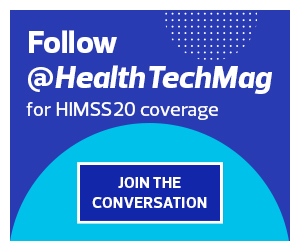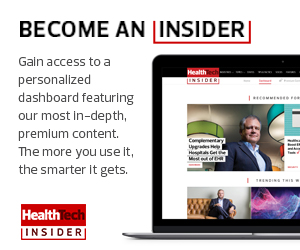The HIMSS20 conference has been canceled due to coronavirus concerns. Read more here.
Hospitals are busy places, but there’s still room for disruption, says Dr. Rod Hochman.
As the president and CEO of Providence St. Joseph Health — the nation’s third-largest health system — Hochman has worked to foster a consumer-focused culture, secure a multiyear strategic partnership with Microsoft and recruit talent from tech giants.
Designed to improve care delivery tools and shift how patients maintain good health at home, an effective disruption, he notes, is driven by “the four D’s”: deconstruction, diversification, digitization and delivery.
Hochman, who will discuss the topic on March 10 as a keynote speaker at the HIMSS20 conference, shared more insights with HealthTech:
HEALTHTECH: You were recently named a top healthcare disruptor by a trade journal. What makes a good leader disruptive?
It’s about trying to rethink your business and asking how you can survive and thrive into the future while constantly reinventing.
Whenever I consider what we’re doing, I think about retailers that are no longer with us because they failed to recognize they had to transform: the Kodak story, the Blockbuster story. No one should be comfortable or arrogant enough to think their business is impenetrable.
HEALTHTECH: What’s driving reinvention at Providence St. Joseph Health?
Digital transformation of the clinical enterprise — and that goes way beyond the electronic health record. Our premise is that traditional healthcare organizations have to transform into health organizations. How do I create a customer for life, so they’re coming to us not just for a cold or a bump but to understand how to stay healthy?
Chief Digital Officer Aaron Martin comes to Providence from Amazon, where it’s all about customer relations; they track exactly how many times my wife and I are using Amazon Prime and they want to make sure we’re visiting them at least two or three times every few weeks.
Aaron’s been looking at a whole bunch of applications to keep people healthy and engaged with us in that same manner, whether it’s for maternal health after a delivery or in between episodes of illness.
INSIDER EXCLUSIVE: Watch a CDW Bring IT On session for tips to plan your digital transformation roadmap.
HEALTHTECH: How does hiring from other industries affect that mission?
We have a Venn diagram that we talk about all the time: One circle is healthcare people, the other is technology people. A lot of times, the technology people just sit there and try to figure out how to redesign healthcare. They usually don’t get it right. And I think healthcare people, on their own, are completely clueless about designing.
But when you actually put them together, that’s where the magic is. We’ve hired more than 200 people from the tech world who really never spent a day in healthcare. They come from the likes of Google, Microsoft, T-Mobile. These perspectives have helped us incredibly.
HEALTHTECH: On that note, could you talk about the strategic alliance your organization formed last year with Microsoft?
We have this very comprehensive five-year relationship. One facet is how we use artificial intelligence and machine learning in our database, and how Microsoft can help us do that. The second is the modernization of the administrative platform, which involves bringing everything into the cloud. It’s an area with potential for a tremendous amount of savings.
The third area is what we call the healthcare center of the future: Could we use our combined technologies to make an experience intuitive when consumers come into a facility?
And the last area is finding the best way to organize the architecture of our data — voice recognition, obviously, but also tools to take text-based data and convert it into information points that can be analyzed.
HEALTHTECH: What’s your biggest pain point now?
We’re completely organized around an electronic health record across seven states, 51 hospitals, about 900 clinics and 7,000 doctors. We’ve implemented the technology, but the real question is how we now start to access the information that comes off of that platform.
So much of what we get from exchanges between patients and clinicians comes in a format that isn’t as readily usable as it could be. EHR technology needs to be much more usable for the clinician, and I think that’s something we're going to hear a lot about in the next few years.
HEALTHTECH: How can smaller healthcare systems achieve disruption?
First, you have to have at least someone on your staff who is digitally focused. The second thing is to focus on partnerships. This is what we’re trying to do as a health system: create services and opportunities to partner with smaller hospitals so they can achieve scale without having to build it on their own.
Keep this page bookmarked for our ongoing virtual coverage of HIMSS20. Follow us on Twitter at @HealthTechMag and join the conversation using the hashtags #VirtualHIMSS20 and #CDWHIMSS.














